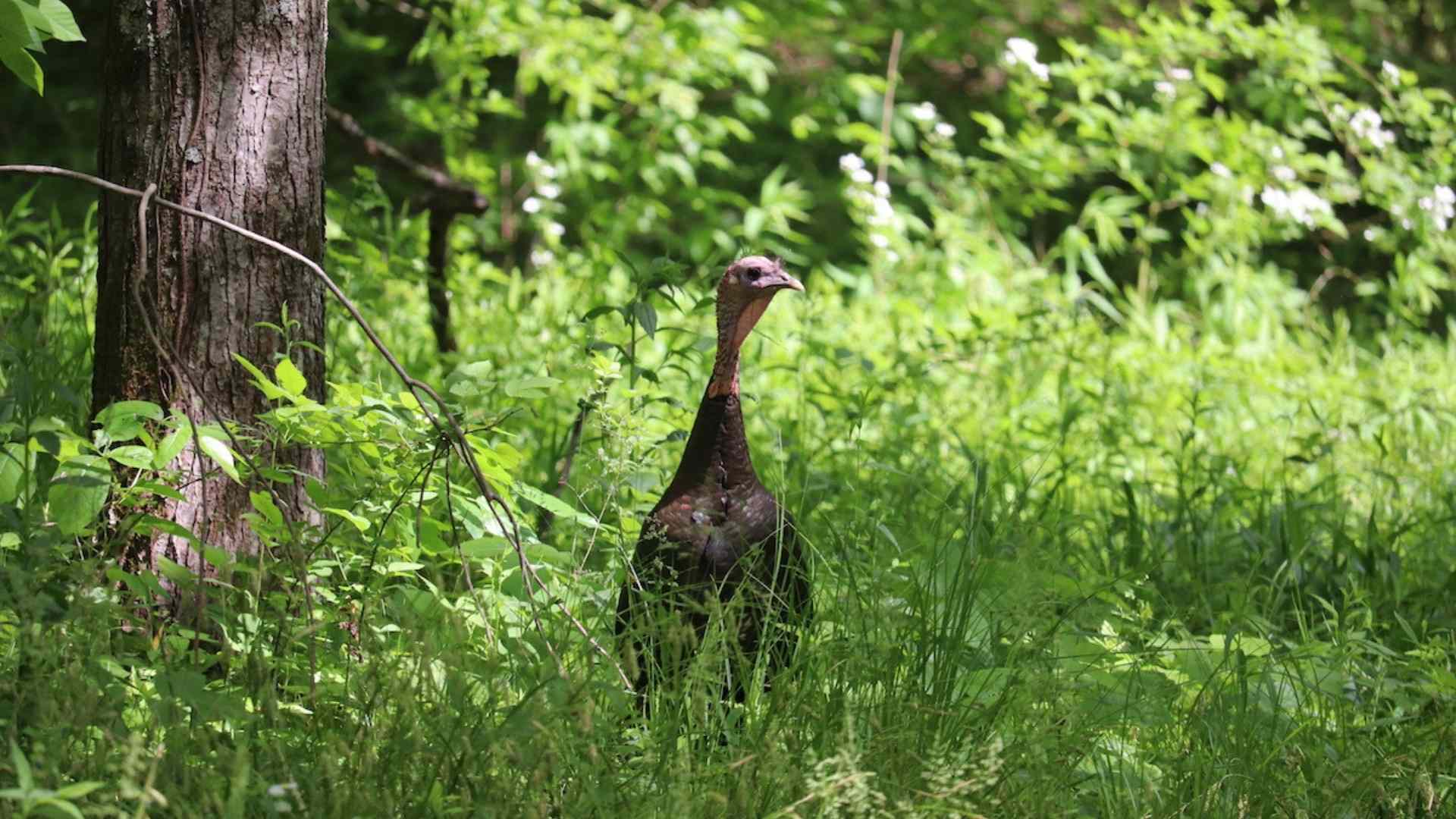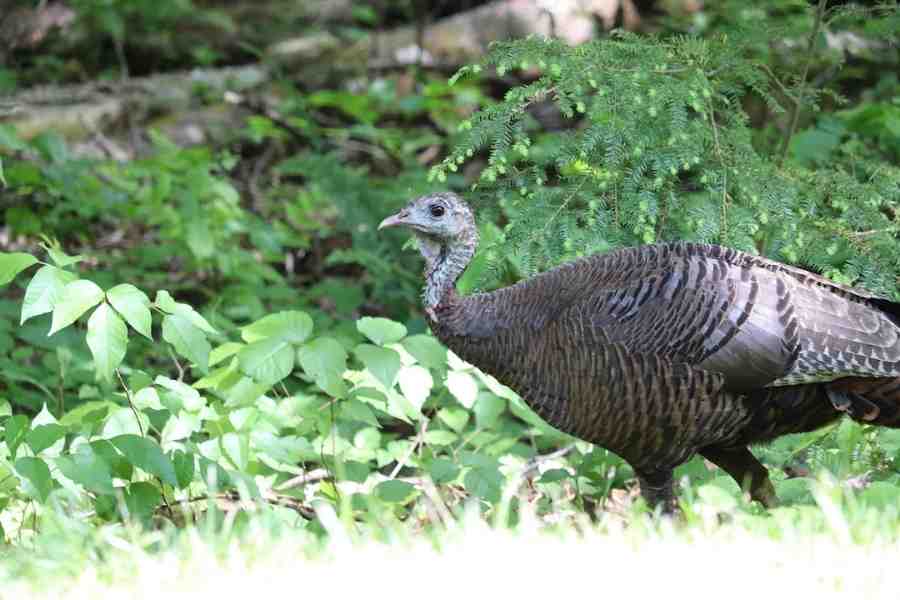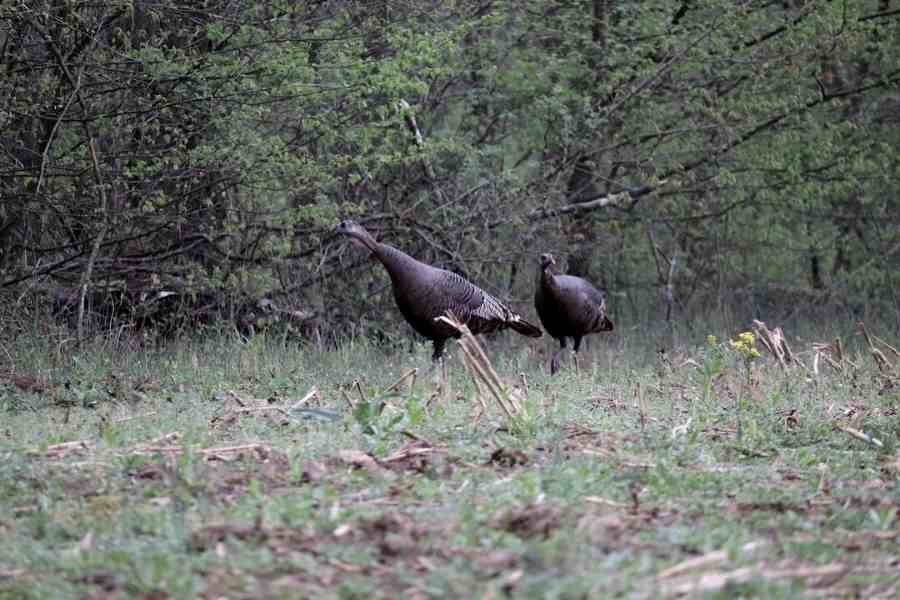With turkey season fast approaching for us hunters, it is only natural to find ourselves with a certain level of curiosity regarding the habits of the wild turkey as a whole.
This is especially true for younger or less experienced hunters, who wish to learn as much as possible about the species of game that they pursue.
Many beginning hunters find themselves questioning the sleeping habits of the wild turkey in a bid to better understand the fine details of turkey hunting.
More specifically, where do turkeys sleep, and how does this factor into formulating a game plan for the hunt ahead?
Contents (Jump to Topic)
ToggleWhere Do Turkeys Rest?
Adult turkeys sleep at an elevated position, known as a “roost.” In most cases, a roost consists of a sizable tree with large stable branches.
The height at which a turkey roost is highly variable, depending upon a number of circumstances.
However, most turkeys roost just high enough in a given tree to gain a thorough sight picture of what lies around them on the ground below.
On occasion, turkeys have been known to roost on other elevated surfaces other than tree limbs.
This is most prominent in the west, where large expanses of open ground are typical.
Trees can be quite scarce or absent in these environments, causing turkeys to roost on large transmission towers. Telephone poles are another favorite roost site in these settings.
In most instances, turkeys will roost in groups that vary substantially in size.
The primary exception to this rule relates to spring gobblers, which often roost by themselves, yet within the general proximity of hen roosting sites.
Even toms typically roost within gender-specific groups during the greater portion of the year.
Why Do Turkeys “Roost”?
Turkeys roost at elevation as a matter of safety. Ground predators serve as the single biggest risk to turkey survival.
Incidentally, the bulk of ground predators, such as coyotes, bobcats, and raccoons, are most active at night when a turkey is defenseless.
Therefore, a turkey’s only means of protection against these threats is to sleep in an elevated position, where they will remain largely undisturbed by predators.
The exception to this scenario arises during the first few weeks of a turkey’s life. Newly born poults are unable to fly immediately following birth.
In order to survive, these newly hatched poults hunker down in thick cover on the edges of fields, at the maternal guidance of the hen to which they belong.
Within a few weeks, poults gain the ability to fly, at which time they will begin roosting on a nightly basis.
What Does This Mean For Hunters?
This begs the question, what is the practical application of this knowledge in a hunting scenario?
The answer to this question is quite simple and has everything to do with strategizing in preparation for a given hunt.
Because turkeys typically remain at a single roost site from sunset until dawn, one can return to hunt near a particular site where they have observed a turkey roost during the previous evening.
This practice is known simply as “roosting” a turkey.
As mentioned above, the practice of roosting involves locating an accessible turkey as they return to roost the evening before a hunt.
You can then return to this area in the predawn darkness in preparation for the flydown to follow.
With any luck, a turkey will fly down from the roost within a relatively short distance of your location.
This makes it much easier to call a particular turkey into range, thereby drastically increasing your odds of success.
However, there is an old saying among turkey hunters that applies in this situation. “Roosted ain’t roasted.”
Simply put careful calling and a sound dose of woodsmanship are required to kill any turkey, even those you have previously roosted.
Locator Calls and Roosting
Locator calls can also pinpoint the specific location of roosting gobblers in the hour following evening fly-up.
Crow and owl calls are among the most popular locator calls, while coyote howlers and goose calls can also be used for a similar purpose.
It can also be beneficial to have more than one type of locator call on hand during any outing.
The goal of locator call use is to entice an amped-up tom to gobble in response to a sudden noise, thereby giving away his location.
Ideally, the use of locator calls should take place between the time of fly-up and complete darkness.
This is when a tom is most likely to shock gobble, as they have not yet fallen asleep on a roost.
In my experience, owl hoot calls and coyote howlers tend to be most effective when calling at dusk, as they represent the sounds of wildlife that are naturally active at these times (you can read about the calls I use here).
I generally employ the use of an owl hoot tube and then switch over to a coyote howler if my initial efforts have failed to achieve the desired results.
Upon locating a gobbler on roost, earmark the turkey’s location for return in the predawn darkness the following morning.
When setting up to hunt a roosted turkey, it is extremely important to avoid encroaching too closely upon the roost site in question.
Blunders of this type can alert a roosted turkey to your presence, thereby ending a hunt before it has begun.
I prefer to set up no closer than 100-yards from a roost site, and even at this distance, I go to great lengths to remain as stealthy as possible.
Once in position, you should remain completely silent until the sun first breaks over the horizon.
Calling To Roosted Gobblers
As the sun begins to break and turkeys start to awaken on roost, light calling can be used to fool a tom into thinking that a hen is located nearby.
However, excessive calling can prove detrimental, as aggressive hens seek to capture a gobbling tom’s attention.
As a result, a live hen might actually draw a gobbler away, leaving you without recourse.
I tend to rely upon a sequence of light tree yelps during such a scenario, followed by complete silence as soon as the tom in question answers with a gobble.
A tom’s response signifies that he is aware of a hen’s presence and is likely to investigate the source of your calls.
With any luck, a gobbler in this position will soon pitch down from roost before heading in your direction, providing you with a possible shot opportunity.
Happy Hunting!









